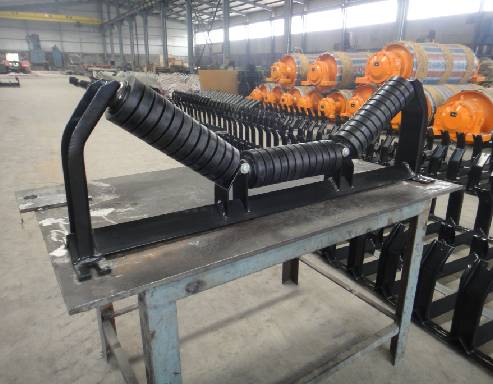 Afrikaans
Afrikaans  Albanian
Albanian  Amharic
Amharic  Arabic
Arabic  Armenian
Armenian  Azerbaijani
Azerbaijani  Basque
Basque  Belarusian
Belarusian  Bengali
Bengali  Bosnian
Bosnian  Bulgarian
Bulgarian  Catalan
Catalan  Cebuano
Cebuano  Corsican
Corsican  Croatian
Croatian  Czech
Czech  Danish
Danish  Dutch
Dutch  English
English  Esperanto
Esperanto  Estonian
Estonian  Finnish
Finnish  French
French  Frisian
Frisian  Galician
Galician  Georgian
Georgian  German
German  Greek
Greek  Gujarati
Gujarati  Haitian Creole
Haitian Creole  hausa
hausa  hawaiian
hawaiian  Hebrew
Hebrew  Hindi
Hindi  Miao
Miao  Hungarian
Hungarian  Icelandic
Icelandic  igbo
igbo  Indonesian
Indonesian  irish
irish  Italian
Italian  Japanese
Japanese  Javanese
Javanese  Kannada
Kannada  kazakh
kazakh  Khmer
Khmer  Rwandese
Rwandese  Korean
Korean  Kurdish
Kurdish  Kyrgyz
Kyrgyz  Lao
Lao  Latin
Latin  Latvian
Latvian  Lithuanian
Lithuanian  Luxembourgish
Luxembourgish  Macedonian
Macedonian  Malgashi
Malgashi  Malay
Malay  Malayalam
Malayalam  Maltese
Maltese  Maori
Maori  Marathi
Marathi  Mongolian
Mongolian  Myanmar
Myanmar  Nepali
Nepali  Norwegian
Norwegian  Norwegian
Norwegian  Occitan
Occitan  Pashto
Pashto  Persian
Persian  Polish
Polish  Portuguese
Portuguese  Punjabi
Punjabi  Romanian
Romanian  Russian
Russian  Samoan
Samoan  Scottish Gaelic
Scottish Gaelic  Serbian
Serbian  Sesotho
Sesotho  Shona
Shona  Sindhi
Sindhi  Sinhala
Sinhala  Slovak
Slovak  Slovenian
Slovenian  Somali
Somali  Spanish
Spanish  Sundanese
Sundanese  Swahili
Swahili  Swedish
Swedish  Tagalog
Tagalog  Tajik
Tajik  Tamil
Tamil  Tatar
Tatar  Telugu
Telugu  Thai
Thai  Turkish
Turkish  Turkmen
Turkmen  Ukrainian
Ukrainian  Urdu
Urdu  Uighur
Uighur  Uzbek
Uzbek  Vietnamese
Vietnamese  Welsh
Welsh  Bantu
Bantu  Yiddish
Yiddish  Yoruba
Yoruba  Zulu
Zulu Rubber Drive Pulley System for Enhanced Performance and Durability in Mechanical Applications
The Importance and Functionality of Rubber Drive Pulleys
In the realm of mechanical engineering and industrial applications, the efficiency of power transmission systems is paramount. One critical component that plays a significant role in this system is the drive pulley, and more specifically, the rubber drive pulley. These pulleys have garnered considerable attention due to their unique properties and advantages over traditional metal or hard material pulleys.
What is a Rubber Drive Pulley?
A rubber drive pulley is a circular disc made primarily of rubber or a rubber-composite material, designed to transmit power between a driving motor and a driven load. These pulleys typically feature a grooved design that accommodates V-belts or flat belts, allowing for effective power transfer while minimizing slippage. The elasticity of rubber gives these pulleys certain distinct characteristics that enhance their functionality in various applications.
Advantages of Rubber Drive Pulleys
1. High Friction Coefficient One of the most significant advantages of rubber drive pulleys is their high friction coefficient. The rubber surface provides a superior grip compared to metal pulleys. This ensures that belts do not slip, providing a more reliable connection between the drive and driven components. This feature is particularly beneficial in applications requiring precision and consistent performance.
2. Shock Absorption Rubber possesses natural shock-absorbing properties, which make rubber drive pulleys excellent at dampening vibrations. This capability helps protect sensitive equipment and enhances the overall durability of the machinery. By mitigating the impact of sudden shocks, these pulleys can extend the lifespan of both the pulley and the driven components.
3. Noise Reduction The use of rubber in pulleys also contributes to reduced noise levels during operation. Metal pulleys can create significant sound due to vibration and resonance. In contrast, rubber pulleys dampen sound and vibration, making them ideal for applications in environments where noise pollution is a concern.
rubber drive pulley

4. Corrosion Resistance Unlike metal pulleys, rubber drive pulleys are not susceptible to rust and corrosion, making them suitable for use in harsh environments, including those exposed to moisture, chemicals, or extreme temperatures. This resilience ensures a longer service life and more consistent performance.
5. Lightweight Rubber drive pulleys are generally lighter than their metal counterparts, making them easier to handle and install. This reduced weight also contributes to lower overall machine weight, which can lead to savings in energy consumption and material costs.
Applications of Rubber Drive Pulleys
Rubber drive pulleys find their place in a wide range of industries and applications. They are commonly used in
- Conveyor Systems In manufacturing and packaging industries, rubber drive pulleys are pivotal in facilitating the smooth movement of products along conveyor belts. - Automotive Many automotive systems utilize rubber drive pulleys, notably in timing belts and accessory drives, where reliable and efficient power transmission is essential. - Agricultural Equipment In tractors and other farming machinery, rubber pulleys help in managing power transmission from engines to various components like harvesters, ensuring efficient operation. - HVAC Systems These pulleys are also integral in heating, ventilation, and air conditioning systems, allowing for the effective operation of fans and blowers.
Conclusion
In conclusion, rubber drive pulleys serve as an essential component in modern mechanical systems due to their numerous advantages, including high friction, shock absorption, noise reduction, corrosion resistance, and lightweight design. Their diverse applications across various industries highlight their versatility and importance in enhancing mechanical efficiency. As technology continues to evolve, the role of rubber drive pulleys is likely to expand, further solidifying their place in the world of power transmission systems. Whether in industrial machinery, automotive applications, or agricultural equipment, rubber drive pulleys will remain a vital element contributing to improved performance and reliability.
-
Revolutionizing Conveyor Reliability with Advanced Rubber Lagging PulleysNewsJul.22,2025
-
Powering Precision and Durability with Expert Manufacturers of Conveyor ComponentsNewsJul.22,2025
-
Optimizing Conveyor Systems with Advanced Conveyor AccessoriesNewsJul.22,2025
-
Maximize Conveyor Efficiency with Quality Conveyor Idler PulleysNewsJul.22,2025
-
Future-Proof Your Conveyor System with High-Performance Polyurethane RollerNewsJul.22,2025
-
Driving Efficiency Forward with Quality Idlers and RollersNewsJul.22,2025





























